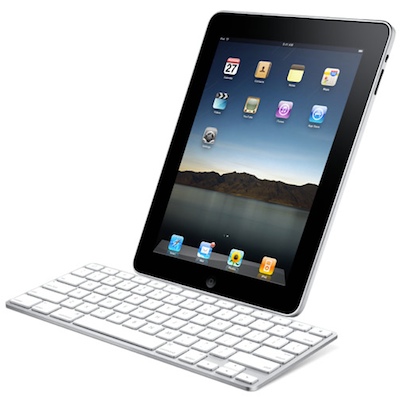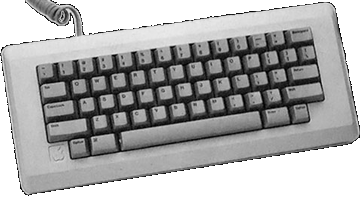iPad

Essentials
Family: iOS
Codename: K48
Minimum OS: iPhone OS 3.2
Maximum OS: iOS 5.1.1
Announced: January 2010
Introduced: March 2010
Terminated: March 2011
Processor
CPU: Apple A4 (ARM Cortex-A8)
CPU Speed: 1.0 GHz
FPU: integrated
Bus Speed: ?
Register Width: 32-bit
Data Bus Width: 64-bit
Address Bus Width: 32-bit
Level 1 Cache: 32 kB data, 32 kB instruction
Level 2 Cache: 512 kB on-processor
Onboard RAM: 256 MB
Maximum RAM: 256 MB
Video
Screen: 9.7" LED-backlit multi-touch
GPU: PowerVR SGX 535 (via A4)
Max Resolution: 1024x768
Video Out: composite, component (via Dock Connector)
Storage
Flash Drive: 16/32/64 GB
Input/Output
USB: via Dock Connector
Audio Out: stereo 16 bit mini
Speaker: mono
Microphone: mono
Sensors: Accelerometer, Ambient light sensor
Networking
Wi-Fi: 802.11a/b/g/n
Bluetooth: 2.1+EDR
Cellular: Optional 3G:
- GSM/EDGE (850, 900, 1800, 1900 MHz)
- UMTS/HSDPA (3.6 & 7.2 Mbps) (850, 1900, 2100 MHz)
Location: WiFi-Assisted GPS (Assisted/Cellular GPS on 3G models), Digital Compass
Miscellaneous
Battery Life: 10 hours
Dimensions: 9.56" H x 7.47" W x 0.5" D
Weight: 1.5 lbs.

The iPad may have been the most widely anticipated Apple device ever. Steve Jobs famously killed the Newton in 1998, as one of his first acts as interim CEO, and had killed several internal Apple tablet projects over the years. Rumors of a new Apple tablet device persisted much of the next decade. Speculation only increased with the 2007 release of the iPhone, which profoundly demonstrated the capabilities of a touch-screen only device.
The years of speculation ended in January 2010, when Apple announced the iPad. Based around a 9.7-inch LED-backlit multi-touch display, the iPad, finally, was more or less what the Rumor-mill had predicted: a giant iPhone. It used a new version of the same iPhone OS that the then-current iPhone 3GS and iPod touch (Late 2009) used, and could run nearly all existing third-party iPhone applications.
Apple positioned the iPad as the first device in an entirely new market segment, making the claim that it would be better at many tasks than either smartphones or traditional laptops. The iPad included specially redesigned versions of the standard suite of iPhone applications, rebuilt from scratch to take advantage of the increased processing power and screen real estate. Apple also ported several Mac-only iWork applications (Pages, Numbers and Keynote) to iPad. Third party developers could develop iPad-specific applications as well.
Most significant to the suite of included iPad applications was iBooks, an eBook reader application combined with a new iTunes-style digital storefront. In an aggressive bid for the eBook reader market, Apple negotiated deals with many of the major book publishers. This put the iPad in direct competition with Amazon's Kindle, which for several years had been the dominant player in the nascent eBook market. Apple was able to secure deals with the large publishing houses by giving them a viable alternative eBook platform, and offering them a lever with which to increase the asking price for eBooks: Apple deals used the same "agency" model adopted for the App store, in which the book sellers set their own price for the book (about $15 for new hardcovers) and Apple took a 30% cut. Amazon had been selling most hardcover books for $9.99, and taking a loss on each book in order to expand their dominance eBook market. In the weeks following the iPad release, Publishers one by one renegotiated their contracts with Amazon to use the agency model.
The iPad was based around an Apple-designed system-on-a-chip, called the A4. The A4 was based on an ARM Cortex-9 CPU, included an integrated GPU, and was extremely energy-efficient. The iPad had an aluminum-backed enclosure, and a nearly 1-inch bezel around the screen, to accommodate any orientation. The iPad was sold in three capacities: 16 GB for $499, 32 GB for $599, and 64 GB for $699. All three capacities were available with 3G wireless capability, for an additional $130. All models included 802.11n and bluetooth wireless connectivity. Apple-branded accessories included a keyboard dock (pictured right) and a neoprene case that doubled as a stand.
Picture Credits:
Apple, Inc.
